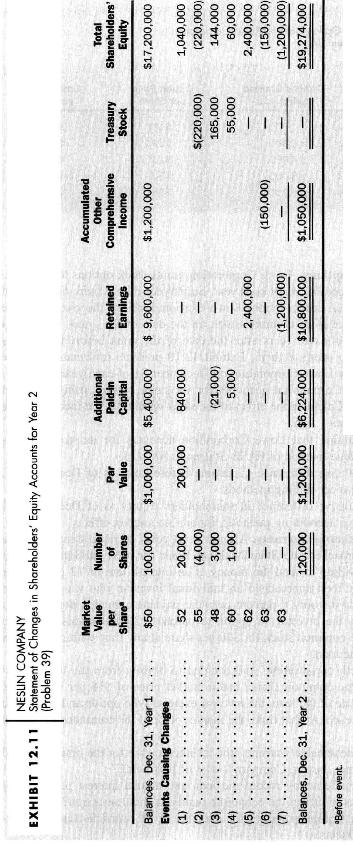Accounting for detachable warrants. After several years of rapid expansion, the Jastern Company approached the State National
Question:
Accounting for detachable warrants. After several years of rapid expansion, the Jastern Company approached the State National Bank for a \(\$ 1\) million, five-year loan. The bank was willing to lend the money at an interest rate of 12 percent per year. Jastern Company then approached an individual investor who was willing to provide the same funds for only 8 percent per year payable annually, provided that Jastern Company gave the investor an option to purchase 20,000 shares of Jastern Company \(\$ 5\)-par value common stock for \(\$ 20\) per share at any time within five years of the initial date of the loan.
Jastern weighed both opportunities and decided to borrow from the investor. At the time of the loan, the common shares had a market price of \(\$ 15\) per share. Five years after the initial date of the loan, the investor exercised the option and purchased 20,000 shares for \(\$ 20\) each. At that time, the market price of the common shares was \(\$ 45\) each.
a. Did the use of the detachable warrants (the technical name for the option granted to the investor) reduce Jastern Company's cost of borrowing?
b. How should Jastern Company record the loan and annual interest payments of \(\$ 80,000\) in its books to reflect the economic reality of the transaction?
c. How might Jastern Company record the exercise of the warrants (and the purchase of the 20,000 shares)?

d. Did exercise of the option dilute the shareholders' equity of the other shareholders on the date the option was exercised?
e. What disclosures during the life of the loan do you think are appropriate? Why?
Step by Step Answer:

Financial Accounting An Introduction To Concepts Methods And Uses
ISBN: 9780324183511
10th Edition
Authors: Clyde P. Stickney, Roman L. Weil





